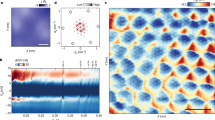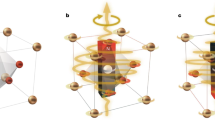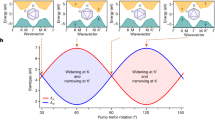Abstract
Two-dimensional atomic crystals of graphene, as well as transition-metal dichalcogenides, have emerged as a class of materials that demonstrate strong interaction with light. This interaction can be further controlled by embedding such materials into optical microcavities. When the interaction rate is engineered to be faster than dissipation from the light and matter entities, one reaches the ‘strong coupling’ regime. This results in the formation of half-light, half-matter bosonic quasiparticles called microcavity polaritons. Here, we report evidence of strong light–matter coupling and the formation of microcavity polaritons in a two-dimensional atomic crystal of molybdenum disulphide (MoS2) embedded inside a dielectric microcavity at room temperature. A Rabi splitting of 46 ± 3 meV is observed in angle-resolved reflectivity and photoluminescence spectra due to coupling between the two-dimensional excitons and the cavity photons. Realizing strong coupling at room temperature in two-dimensional materials that offer a disorder-free potential landscape provides an attractive route for the development of practical polaritonic devices.
This is a preview of subscription content, access via your institution
Access options
Subscribe to this journal
Receive 12 print issues and online access
$209.00 per year
only $17.42 per issue
Buy this article
- Purchase on Springer Link
- Instant access to full article PDF
Prices may be subject to local taxes which are calculated during checkout




Similar content being viewed by others
References
Novoselov, K. S. et al. Two-dimensional atomic crystals. Proc. Natl Acad. Sci. USA 102, 10451–10453 (2005).
Britnell, L. et al. Strong light–matter interactions in heterostructures of atomically thin films. Science 340, 1311–1314 (2013).
Wang, Q. H., Kalantar-Zadeh, K., Kis, A., Coleman, J. N. & Strano, M. S. Electronics and optoelectronics of two-dimensional transition metal dichalcogenides. Nature Nanotech. 7, 699–712 (2012).
Mak, K. F., Lee, C., Hone, J., Shan, J. & Heinz, T. F. Atomically thin MoS2: a new direct-gap semiconductor. Phys. Rev. Lett. 105, 136805 (2010).
Splendiani, A. et al. Emerging photoluminescence in monolayer MoS2 . Nano Lett. 10, 1271–1275 (2010).
Sundaram, R. S. et al. Electroluminescence in single layer MoS2 . Nano Lett. 13, 1416–1421 (2013).
Zhu, W. et al. Electronic transport and device prospects of monolayer molybdenum disulphide grown by chemical vapour deposition. Nature Commun. 5, 3087 (2014).
Zeng, H., Dai, J., Yao, W., Xiao, D. & Cui, X. Valley polarization in MoS2 monolayers by optical pumping. Nature Nanotech. 7, 490–493 (2012).
Mak, K. F., He, K., Shan, J. & Heinz, T. F. Control of valley polarization in monolayer MoS2 by optical helicity. Nature Nanotech. 7, 494–498 (2012).
Cao, T. et al. Valley-selective circular dichroism of monolayer molybdenum disulphide. Nature Commun. 3, 887 (2012).
Xiao, D., Liu, G.-B., Feng, W., Xu, X. & Yao, W. Coupled spin and valley physics in monolayers of MoS2 and other group-VI dichalcogenides. Phys. Rev. Lett. 108, 196802 (2012).
Lopez-Sanchez, O., Lembke, D., Kayci, M., Radenovic, A. & Kis, A. Ultrasensitive photodetectors based on monolayer MoS2 . Nature Nanotech. 8, 497–501 (2013).
Qiu, D. Y., da Jornada, F. H. & Louie, S. G. Optical spectrum of MoS2: many-body effects and diversity of exciton states. Phys. Rev. Lett. 111, 216805 (2013).
Schuller, J. A. et al. Orientation of luminescent excitons in layered nanomaterials. Nature Nanotech. 8, 271–276 (2013).
Gan, X. et al. Controlling the spontaneous emission rate of monolayer MoS2 in a photonic crystal nanocavity. Appl. Phys. Lett. 103, 181119 (2013).
Wu, S. et al. Control of two-dimensional excitonic light emission via photonic crystal. 2D Mater. 1, 011001 (2014).
Weisbuch, C., Nishioka, M., Ishikawa, A. & Arakawa, Y. Observation of the coupled exciton–photon mode splitting in a semiconductor quantum microcavity. Phys. Rev. Lett. 69, 3314–3317 (1992).
Kasprzak, J. et al. Bose–Einstein condensation of exciton polaritons. Nature 443, 409–414 (2006).
Lagoudakis, K. G. et al. Probing the dynamics of spontaneous quantum vortices in polariton superfluids. Phys. Rev. Lett. 106, 115301 (2011).
Amo, A. et al. Polariton superfluids reveal quantum hydrodynamic solitons. Science 332, 1167–1170 (2011).
Kéna-Cohen, S. & Forrest, S. R. Room-temperature polariton lasing in an organic single-crystal microcavity. Nature Photon. 4, 371–375 (2010).
Christopoulos, S. et al. Room-temperature polariton lasing in semiconductor microcavities. Phys. Rev. Lett. 98, 126405 (2007).
Lu, T.-C. et al. Room temperature polariton lasing vs. photon lasing in a ZnO-based hybrid microcavity. Opt. Express 20, 5530–5537 (2012).
Bhattacharya, P. et al. Room temperature electrically injected polariton laser. Phys. Rev. Lett. 112, 236802 (2014).
Agranovich, V. M., Litinskaya, M. & Lidzey, D. G. Cavity polaritons in microcavities containing disordered organic semiconductors. Phys. Rev. B 67, 85311 (2003).
Eda, G. et al. Photoluminescence from chemically exfoliated MoS2 . Nano Lett. 11, 5111–5116 (2011).
Lee, Y.-H. et al. Synthesis and transfer of single-layer transition metal disulfides on diverse surfaces. Nano Lett. 13, 1852–1857 (2013).
Shi, H., Yan, R., Bertolazzi, S., Brivio, J. & Gao, B. Exciton dynamics in suspended monolayer and few-layer MoS2 2D crystals. ACS Nano. 7, 1072–1080 (2013).
Amo, A. et al. Exciton–polariton spin switches. Nature Photon. 4, 361–366 (2010).
Savona, V., Andreani, L. C., Schwendimann, P. & Quattropani, A. Quantum well excitons in semiconductor microcavities: unified treatment of weak and strong coupling regimes. Solid-State Commun. 93, 733–739 (1995).
Acknowledgements
X.L., T.G., Z.S. and V.M. acknowledge support from the Army Research Office (grant no. W911NF1310001) and the National Science Foundation MRSEC programme (grant no. DMR 1120923). F.X. acknowledges support from the Air Force Office of Scientific Research. Y.H.L. and E.C.L. acknowledge support from the Ministry of Science and Technology of the Republic of China (103-2112-M-007-001-MY3). S.K.C. acknowledges support from the NSERC Discovery grant programme.
Author information
Authors and Affiliations
Contributions
V.M. and F.X. initiated the project. X.L., V.M. and F.X. designed the experiments. X.L. fabricated the microcavity samples. X.L. and Z.S. collected the data and X.L., S.K.C. and V.M. analysed it. E.C.L. and Y.H.L. grew the CVD monolayer MoS2. X.L. and T.G. performed the theoretical modelling. All authors contributed to the discussion of the results and writing the manuscript.
Corresponding author
Ethics declarations
Competing interests
The authors declare no competing financial interests.
Supplementary information
Supplementary information
Supplementary information (PDF 1299 kb)
Rights and permissions
About this article
Cite this article
Liu, X., Galfsky, T., Sun, Z. et al. Strong light–matter coupling in two-dimensional atomic crystals. Nature Photon 9, 30–34 (2015). https://doi.org/10.1038/nphoton.2014.304
Received:
Accepted:
Published:
Issue Date:
DOI: https://doi.org/10.1038/nphoton.2014.304
This article is cited by
-
Recent progress of exciton transport in two-dimensional semiconductors
Nano Convergence (2023)
-
Computational study on the catalytic control of endo/exo Diels-Alder reactions by cavity quantum vacuum fluctuations
Nature Communications (2023)
-
Direct nano-imaging of light-matter interactions in nanoscale excitonic emitters
Nature Communications (2023)
-
Spin-selective strong light–matter coupling in a 2D hole gas-microcavity system
Nature Photonics (2023)
-
Probing spin dynamics of ultra-thin van der Waals magnets via photon-magnon coupling
Nature Communications (2023)



